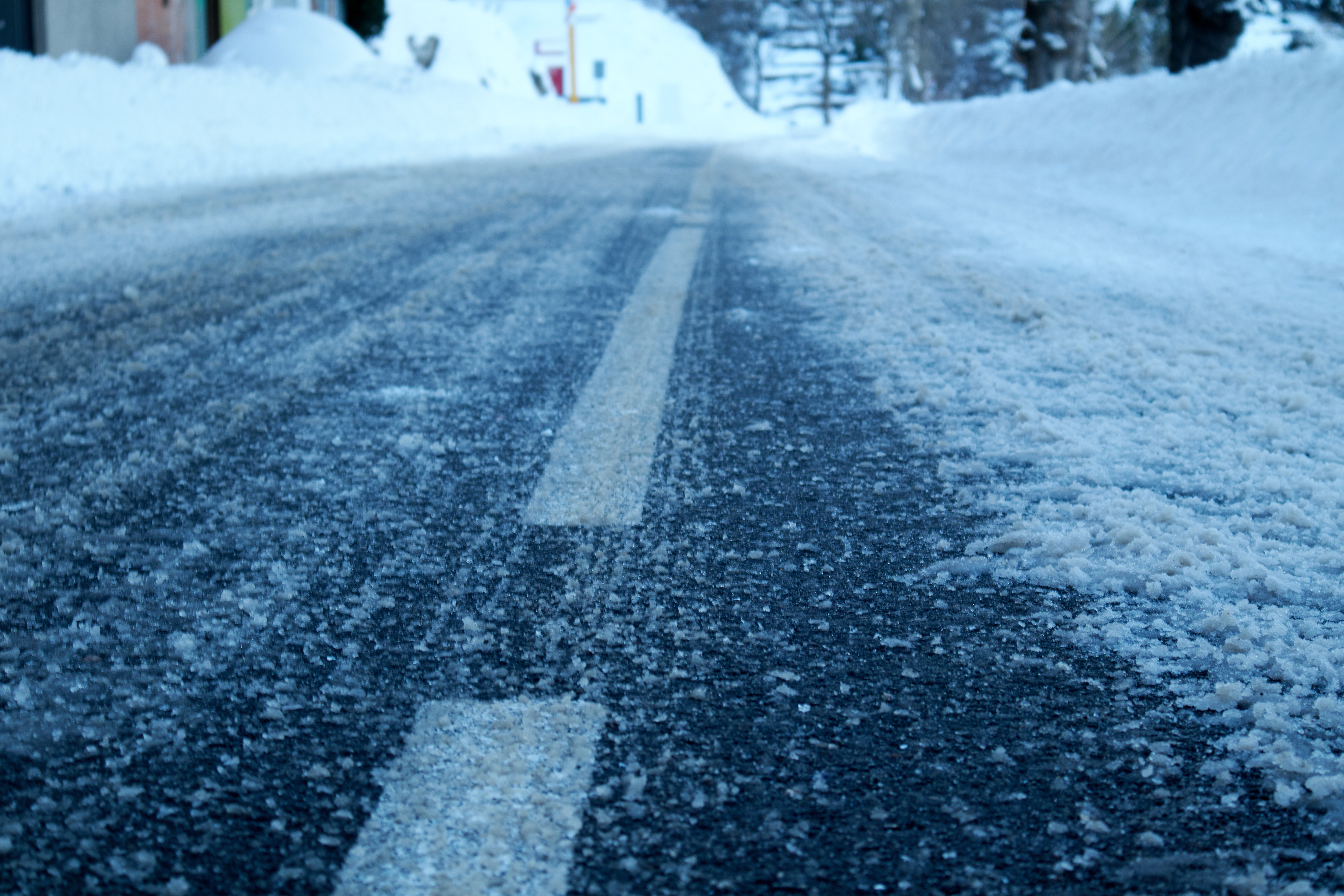Winter comes with unique challenges to asphalt installation due to lower temperatures, which can affect the material’s integrity, compaction, and durability. In this guide, we’ll explore when and how it might be possible to lay asphalt in winter conditions, focusing on specific temperature ranges, preparation requirements, and the risks involved. Understanding these factors will help you make decisions on whether to proceed with a winter asphalt project or wait for warmer conditions.
How Asphalt Reacts to Different Temperature Ranges
Asphalt isn’t just a black surface we drive on; it’s a complex material that reacts to the environment. Temperature plays a large role in its performance and durability.
- Warm Temperatures: When it’s hot outside, asphalt becomes more fluid and flexible. This flexibility is great during installation because it allows the asphalt to be molded and compacted effectively. However, extreme heat can make it too soft, leading to ruts or depressions under heavy traffic.
- Cold Temperatures: In cooler weather, asphalt hardens quickly and becomes more brittle. This can lead to cracking, especially under heavy loads or when the ground shifts.
- Expansion and Contraction: Asphalt expands when heated and contracts when cooled. Over time, these movements can cause fatigue and contribute to cracking. The freeze-thaw cycle in winter can make this issue worse as the moisture in the ground freezes and thaws repeatedly.
Understanding these temperature-related behaviors helps in planning installations and maintenance.
Hot Mix Asphalt and Cold Mix Asphalt
There are two types of asphalt mixes commonly used in road construction: hot mix and cold mix. The main difference between them is the temperature at which they’re applied.
- Hot Mix Asphalt (HMA): This is the most common type of asphalt used, consisting of a mixture of aggregate materials and liquid asphalt cement heated to around 300°F before being applied. HMA is ideal for warmer temperatures because it needs to be laid and compacted quickly before it cools.
- Cold Mix Asphalt: As the name suggests, this type of asphalt can be installed even in cooler temperatures. Its components are mixed at room temperature or slightly above and require no heating. Cold mix is commonly used for temporary repairs and patching potholes.
Overall, cold weather plays a role in the smoothness and durability of asphalt surfaces. Whether you want to wait for warmer temperatures or start in the winter, knowing these factors can help you make a decision.
Can You Lay Asphalt in the Winter?
So, can asphalt be laid in winter? The short answer is yes, but it’s complicated. Let’s explore why winter installations are challenging and how they can still be successful.
Seasonal Challenges for Asphalt
Winter presents unique obstacles that can affect the quality and durability of asphalt installations.
Quick Cooling
- Limited Work Time: In cold weather, asphalt cools down much faster, reducing the time available for proper spreading and compaction.
- Risk of Poor Compaction: Rapid cooling can prevent the asphalt from binding correctly, leading to a weaker surface.
- Solutions: Using insulated trucks and equipment can help maintain the asphalt’s temperature during transport and installation.
Moisture Concerns
- Surface Moisture: Snow, ice, or even moisture on the base layer can interfere with the asphalt’s ability to bond properly.
- Structural Weaknesses: Moisture can cause layers to separate or lead to freeze-thaw cycles that damage the pavement.
- Preparation is Key: Thoroughly clearing and drying the surface before installation can help prevent these issues.
Increased Equipment Needs
- Heated Equipment: Specialized heaters and insulated pavers may be necessary to keep the asphalt at the right temperature.
- Additional Costs: These requirements can increase the project’s complexity and cost.
Carefully considering these factors and implementing solutions can help you start a successful winter asphalt installation.
Conditions Needed for Asphalt Installation in Winter
If you’re considering a winter asphalt project, certain conditions can improve the chances of success.
Surface Preparation
- Clear the Area: Remove all snow, ice, and debris from the installation site.
- Dryness: The surface should be completely dry to promote proper bonding.
- Stabilize the Base: A stable, dry base is crucial for the longevity of the asphalt surface.
Ambient Temperature
- Aim for Warmer Days: While installations can occur in temperatures above 40°F, warmer is better.
- Monitor Conditions: Keep an eye on both ambient and ground temperatures to ensure they’re within acceptable ranges.
- Choose the Right Mix: Some asphalt mixes are designed to perform better in cooler temperatures.
Proper Equipment
- Use Insulated Trucks: These help maintain the asphalt’s temperature during transport.
- Employ Heated Pavers: They keep the asphalt hot during application.
- Have Backup Plans: Equipment failures in cold weather can be more problematic, so having backups is wise.
By meeting these conditions, you can improve the odds of a worthwhile winter asphalt installation. It is recommended to consult with a professional contractor and listen to their advice before starting a project. Additionally, it’s important to note that winter installations may require extra time for curing due to lower temperatures, so patience is key during this process.
Pros and Cons of Winter Asphalt Installation
Deciding whether to proceed with asphalt work in the winter involves weighing the pros and cons. While it may seem more convenient to wait until warmer weather, there are benefits to winter installations that should be considered.
Pros of Winter Installation
Immediate Repairs
- Prevent Further Damage: Fixing potholes or cracks promptly can prevent them from worsening over the winter.
- Safety Concerns: Addressing issues quickly reduces the risk of accidents.
Faster Scheduling
- Contractor Availability: Many contractors have more open schedules in the winter, so you might get your project started sooner.
- Potential Discounts: Some companies offer off-season rates.
Cons of Winter Installation
Reduced Durability
- Compaction Challenges: As we’ve mentioned, colder temperatures can hinder proper compaction, affecting the pavement’s longevity.
- Quality Concerns: There’s a higher risk that the asphalt won’t perform as well or last as long.
Higher Costs
- Special Equipment: The need for heated or insulated equipment can increase costs.
- Increased Labor: Working in cold conditions may require more workers or longer hours.
Limited Applications
- Not Suitable for All Projects: Large-scale or high-traffic projects might not be ideal for winter installation.
- Material Limitations: You may have to use different asphalt mixes that aren’t as durable.
Making the Decision
When considering a winter asphalt project, ask yourself:
- Is the Repair Urgent? If it’s a safety issue or could lead to more significant problems, it might be worth proceeding.
- Can You Afford the Extra Costs? Specialized equipment and potential delays can add to the budget.
- Are You Okay with a Temporary Fix? In some cases, a temporary solution can be replaced with a permanent one in warmer weather.
Ultimately, the decision will depend on the urgency of the repair, your budget considerations, and your willingness to accept a potentially temporary solution.
Keep Your New Asphalt in Top Shape with Superior Asphalt
Laying asphalt in winter is possible but requires careful planning, the right materials, and expertise in cold-weather installations. For projects that must proceed in winter, following best practices for site preparation, temperature control, and mix selection can lead to successful outcomes. It’s important not to forget about maintenance for your asphalt, no matter what time of year it is laid. At Superior Asphalt, we offer asphalt maintenance services for home and property owners to keep your pavement in top shape. Contact us for exact asphalt pricing, asphalt repairs, and any questions today!


